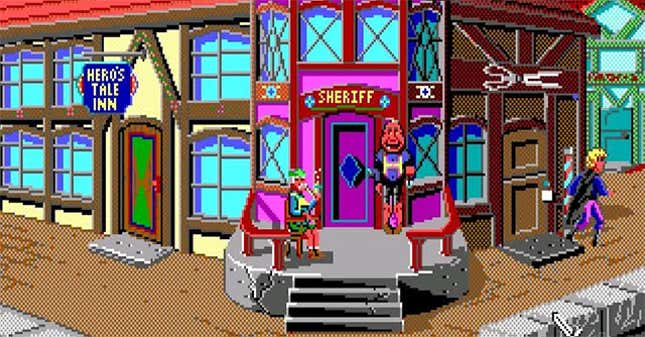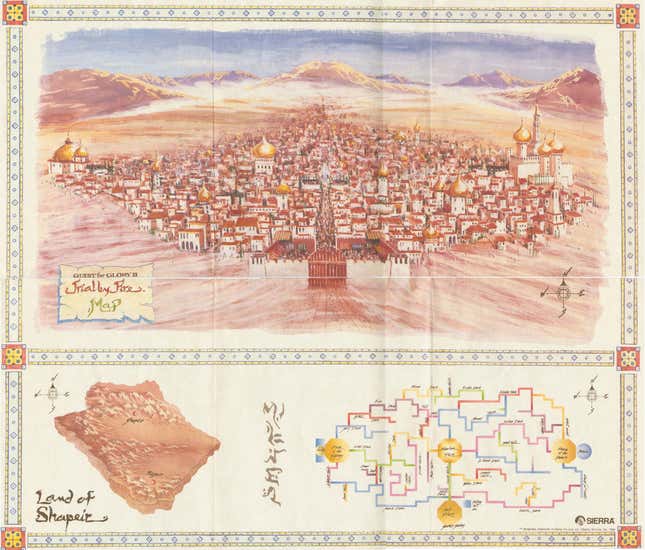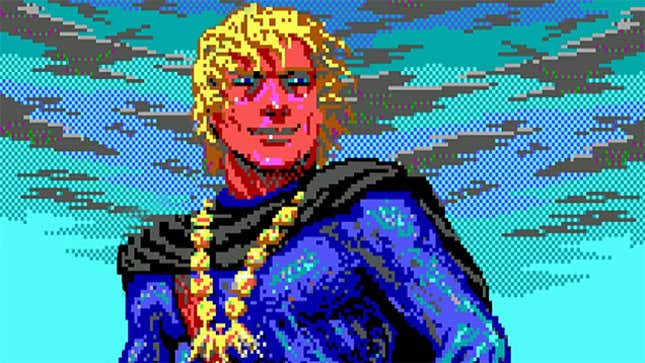I was only partially raised by my parents. They taught me some things: tying shoelaces, manners, the gentlemen’s sport of cricket. But growing up alongside Sierra adventure games, they taught me pretty much everything else, from asinine grammar to correct police procedure to the very alarming fact that almost everything in the world can kill you at any moment.
This story originally appeared 2/17/15.
From the first Police Quest through to the last King’s Quest, I’ve played every single adventure game Sierra ever released. Some as a kid, some as an adult, but almost all of them have left a strong impression on me for one reason or another, whether it be for their setting, brutality or weird adherence to strict rules of authenticity.
Controlled by typing text commands (or, in later years, wonky mouse interfaces), tough as nails and sometimes dealing with niche subject matter, they weren’t for everyone then, and definitely aren’t for everyone now (typing sucks and Leisure Suit Larry has aged particularly badly).
But they’re still worth remembering. Lucasarts may have brought more accessibility to adventure gaming with their elegant SCUMM system, not to mention a more light-hearted approach to an inherently frustrating genre, but Sierra games had a quirky sense of humour of their own, and were in many ways braver with their design.
So they’re as deserving of praise and reflection as any Monkey Island game is. And no single Sierra adventure game is worth more praise than Quest for Glory II.
I love Police Quest’s educational value. I have a soft spot for Space Quest’s brand of shitty joke. Leisure Suit Larry had a certain charm (but fuck King’s Quest).

But it was Quest for Glory’s unique brand of adventuring that shines as the best use of Sierra’s various skills. It brought everything Sierra did so well in all those other series — a deep, cohesive world, tough challenges, memorable characters and a roguish sense of humour — and tied them all together. Oh, and it pioneered a bunch of other stuff as well, stuff that if you dig playing more modern games you’ll appreciate as being way ahead of their time.
Quest for Glory was a hybrid series. They combined Sierra’s traditional adventuring with RPG-like elements. The first game was important because it laid down this bizarre template, which included stuff like:
- A day/night cycle that ticks away in real-time. Certain characters and events will only take place during certain times of day.
- A convincing (for the time) open world, comprised of more traditional adventure game areas (rooms, town squares, etc) surrounded by tiled wilderness areas the player would need to explore and eventually map and/or memorise.
- A strong RPG spine. Players would choose a class at the start of the game, and this class would affect the way they approached the game and its puzzles (thieves could pick locks, etc).
- Stats for those classes were improved, just like in Elder Scrolls, by actually performing their actions. The more you threw rocks, for example, the better your throwing skill became.
- The preservation of stats through the series. Players could save their base stats at the end of the first game and carry their character through to the next game, and the next.
Quest for Glory deserves a ton of credit for this bold design, but Quest for Glory II is better because, well, it just does it all better.
Why? For one, it makes the most of its real-time setting. Unlike other QFG games, which simply pass from day to night, QFGII has an actual calendar. It ends after 30 in-game days, and certain events and characters only appear at specific times in specific places. Miss them once and you might have missed them forever. This could have been stressful, in the same way Majora’s Mask can be for some people, but since you’re given a whole 30 days to get around it’s generally pretty chill. For a game from 1990 to have built such a living, breathing world was one hell of an achievement.

It’s also a truly memorable setting. The Middle East these days is usually just a video game battlefield, but perhaps benefiting from the fact that it was made before the first Gulf War, let alone the second, QFGII immerses the player in a rich Arabian fantasy world, which (and this is a series constant, to its immense credit) gets past the temptation for casual stereotyping.
Oh, and it also laid the groundwork for future design staples like Elder Scrolls’ guilds and BioWare’s morality system. QFGII let the player complete unique quests based around each class, where fighters could join an order, wizards a school, etc (though, in a nice touch, players were free to join all of them if their stats could handle it). A reward for finishing the game by making the “right” choices, meanwhile, meant that honourable players could finish QFGII as a Paladin and get a sweet sword, which they could then transfer and show off in later games.
All this came together to make you feel like you weren’t just progressing through a chain of puzzles; you were role-playing in the truest sense of the word, playing a central part in saving a world that lived and breathed, whose inhabitants had jobs, and likes, and dislikes, and stuff hidden in their bedrooms.
This game is a treasure because it was a 21st century video game developed in 1990. Go back and play it now and, aside from the text entry, it’s full of forward-thinking stuff that many RPGs made even today forget (or aren’t smart enough) to include.
Which is why it’s the best Sierra adventure game. Too many of its labelmates were products of their era, important and fun then but only if you were lucky enough to be playing them at the time. Quest for Glory II was so far ahead of its time that it was fun in 1990 but also remains strangely relevant and approachable even today.
If you want to try it out yourself, but can’t bear the thought of struggling through all that typing, some fans went and remade the game with a more modern interface. You can download that here.

The Bests are Kotaku’s picks for the best things on (or off) the internet.